Mini-ITX madness
Jan 17, 2004 — by Rick Lehrbaum — from the LinuxDevices Archive — 90 viewsThis LinuxDevices.com guide to mini-ITX motherboards in the world of embedded Linux provides an introduction to mini-ITX and aggregates news stories, project features, board announcements, and more. Read each article and follow the emergence of mini-ITX as one of the key form-factors for embedded Linux based products and projects!
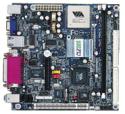 Mini-ITX is an ultra-compact (6.7 x 6.7 in.) mainboard form-factor developed by Via Technologies Inc. Mini-ITX targets a new generation of quiet, small footprint, connected, information and entertainment systems and enables the creation of an exciting new generation of small, ergonomic, innovative, and affordable embedded systems through its high level of integration and vastly reduced size of less than 33% that of the FlexATX mainboard form-factor.
Mini-ITX is an ultra-compact (6.7 x 6.7 in.) mainboard form-factor developed by Via Technologies Inc. Mini-ITX targets a new generation of quiet, small footprint, connected, information and entertainment systems and enables the creation of an exciting new generation of small, ergonomic, innovative, and affordable embedded systems through its high level of integration and vastly reduced size of less than 33% that of the FlexATX mainboard form-factor.
The mini-ITX form-factor, as originally defined by VIA
VIA launched mini-ITX as a way to showcase its inexpensive chipsets for computer hobbyists, but the form factor has since gone into many other embedded markets. Its success has brought a vast proliferation of cases, power supplies, slim-line drives, Flash-to-IDE adapters, and other handy computing components that have helped drive the form factor into applications such as living room PCs and commodity hardware-based dense computing applications.
Additionally, the charms of mini-ITX have not been lost on industrial board vendors such as Kontron and others. Of course, it's important to note that mini-ITX motherboards from industrial single-board computer (SBC) vendors typically offer thicker PCBs, more rugged designs, and better build quality, compared with mini-ITX boards aimed at the consumer market. They also have correspondingly higher prices and minimum order volumes.
Key Mini-ITX resources:
- Mini-ITX form-factor whitepaper — The above drawing comes from VIA's original whitepaper defining the mini-ITX form-factor. The full mini-ITX whitepaper is available here (PDF download).
- Mini-ITX.com — a website devoted to mini-ITX news and projects — Mini-ITX.com provides comprehensive coverage of mini-ITX news, projects, and hardware, along with a mini-ITX FAQ and an online store for purchasing selected mini-ITX boards, enclosures, and other related hardware. details
- LinITX.org — portal for Linux on Mini-ITX hardware — LinITX.org is a community site devoted to running Linux on mini-ITX solutions. The site includes forums, information, news, downloads, etc. Running Linux on mini-ITX hardware is ideal for DVD/MP3 players, firewalls, mail servers, web servers, dns servers. The list is endless! details
 VIA EPIA 'Mini ITX' compact SBC — The board that launched the mini-ITX revolution! Find out all about the hardware on this specification/description page. details
VIA EPIA 'Mini ITX' compact SBC — The board that launched the mini-ITX revolution! Find out all about the hardware on this specification/description page. details
 Commell LV-675 — [Dec. 14, 2005] — Claimed to be the first mini-ITX board to support Pentium M and Celeron M processors with a 533 MHz front side bus (FSB), the LV-675 comes with drivers for embedded Linux. details
Commell LV-675 — [Dec. 14, 2005] — Claimed to be the first mini-ITX board to support Pentium M and Celeron M processors with a 533 MHz front side bus (FSB), the LV-675 comes with drivers for embedded Linux. details
 Kontron 886LCD-M/mITX(BGA) — [Nov. 2, 2005] — A passively cooled, Linux-ready mini-ITX motherboard with a soldered-down BGA (ball-grid array) Intel processor and long-term availability, the 886LCD-M/mITX(BGA) has a 600MHz mobile Celeron processor, and targets cost-sensitive, low-power applications, such as POS (point-of-sales/service), gaming, banking, measurement, medical, and industrial computing. details
Kontron 886LCD-M/mITX(BGA) — [Nov. 2, 2005] — A passively cooled, Linux-ready mini-ITX motherboard with a soldered-down BGA (ball-grid array) Intel processor and long-term availability, the 886LCD-M/mITX(BGA) has a 600MHz mobile Celeron processor, and targets cost-sensitive, low-power applications, such as POS (point-of-sales/service), gaming, banking, measurement, medical, and industrial computing. details
 Kontron 786LCD/mITX — [Sep. 28, 2005] — A mini-ITX board targeting cost-constrained, high-volume applications such as gaming, POS (point-of-sales/service), data communications, and medical equipment, the 786LCD/mITX is based on a mature Intel chipset yet supports USB 2.0, SATA, FireWire, and LVDS, Kontron says. details
Kontron 786LCD/mITX — [Sep. 28, 2005] — A mini-ITX board targeting cost-constrained, high-volume applications such as gaming, POS (point-of-sales/service), data communications, and medical equipment, the 786LCD/mITX is based on a mature Intel chipset yet supports USB 2.0, SATA, FireWire, and LVDS, Kontron says. details
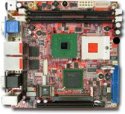 Arbor Technology ITX-i7435 — [Sep. 27, 2005] — A mini-ITX motherboard graced with a PCI Express x16 slot, and targeting multimedia, gaming, and other applications requiring high-quality graphics performance, the ITX-i7435 supports several Socket 478 Pentium M/Celeron M processors. details.
Arbor Technology ITX-i7435 — [Sep. 27, 2005] — A mini-ITX motherboard graced with a PCI Express x16 slot, and targeting multimedia, gaming, and other applications requiring high-quality graphics performance, the ITX-i7435 supports several Socket 478 Pentium M/Celeron M processors. details.
 Kontron 886LCD/mITX — [Aug. 28, 2005] — A highly integrated mini-ITX motherboard with Pentium 4 and Celeron processor options up to 3 GHz, the 886LCD/mITX includes an AGP/DVO slot and targets CPU-intensive, cost-sensitive industrial applications. details
Kontron 886LCD/mITX — [Aug. 28, 2005] — A highly integrated mini-ITX motherboard with Pentium 4 and Celeron processor options up to 3 GHz, the 886LCD/mITX includes an AGP/DVO slot and targets CPU-intensive, cost-sensitive industrial applications. details
 Axiomtek SBC86800 board and EM603201 case — [Jul. 7, 2005] — A mini-ITX board supporting Intel Pentium-4 and Celeron processors, and available with a rolled steel micro-box with 180-Watt ATX power supply. details.
Axiomtek SBC86800 board and EM603201 case — [Jul. 7, 2005] — A mini-ITX board supporting Intel Pentium-4 and Celeron processors, and available with a rolled steel micro-box with 180-Watt ATX power supply. details.
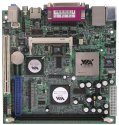 iBase MB720 — [Apr. 29, 2005] — A Via-based mini-ITX board that uses the same chipset used in newer Via mini-ITX boards, the MB720 is available with an LVDS module supporting 4:3 and 16:9 LCD displays. It targets industrial, gaming, medical, digital entertainment and other applications requiring stable and long lifecycle platforms. Details
iBase MB720 — [Apr. 29, 2005] — A Via-based mini-ITX board that uses the same chipset used in newer Via mini-ITX boards, the MB720 is available with an LVDS module supporting 4:3 and 16:9 LCD displays. It targets industrial, gaming, medical, digital entertainment and other applications requiring stable and long lifecycle platforms. Details
 Via ships dual-processor mini-ITX board — [Mar. 11, 2005] — Via is now sampling its first dual-processor mini-ITX board. The DP-310 features dual 1GHz Eden-N processors, along with gigabit Ethernet, SATA, a media-processing graphics system, and more. It targets high-density server systems, appliance servers, and compact embedded digital devices. details
Via ships dual-processor mini-ITX board — [Mar. 11, 2005] — Via is now sampling its first dual-processor mini-ITX board. The DP-310 features dual 1GHz Eden-N processors, along with gigabit Ethernet, SATA, a media-processing graphics system, and more. It targets high-density server systems, appliance servers, and compact embedded digital devices. details
 World's fastest Mini-ITX mobo? — [Feb. 18, 2005] — Powered by Pentium M processors at up to 2.3 GHz, the P620 Hawk is crammed with interfaces and expansion buses, and may also be the first Mini-ITX mobo to offer PMC expansion. details
World's fastest Mini-ITX mobo? — [Feb. 18, 2005] — Powered by Pentium M processors at up to 2.3 GHz, the P620 Hawk is crammed with interfaces and expansion buses, and may also be the first Mini-ITX mobo to offer PMC expansion. details
 Coventive Uranus — [Jan 4, 2005] — A mini-ITX SBC (single-board computer) targeting Linux-based DVRs (digital video recorders), wireless TVs, network MPEG encoding boxes, and surveillance systems. The Uranus board is based on a MIP64 Toshiba SoC (system-on-chip), along with a Vweb MPEG coprocessor, and comes with a Linux SDK (software development kit). details
Coventive Uranus — [Jan 4, 2005] — A mini-ITX SBC (single-board computer) targeting Linux-based DVRs (digital video recorders), wireless TVs, network MPEG encoding boxes, and surveillance systems. The Uranus board is based on a MIP64 Toshiba SoC (system-on-chip), along with a Vweb MPEG coprocessor, and comes with a Linux SDK (software development kit). details
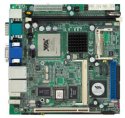 Commell LV-667 — [Dec. 17, 2004] — Commell is shipping a mini-ITX board said to offer advanced graphics features, based on Via's latest northbridge. The LV-667 is available with a variety of video port options, and targets PVRs, set-top boxes, gaming machines, kiosks, POS (point-of-sales/service) devices, and more. details
Commell LV-667 — [Dec. 17, 2004] — Commell is shipping a mini-ITX board said to offer advanced graphics features, based on Via's latest northbridge. The LV-667 is available with a variety of video port options, and targets PVRs, set-top boxes, gaming machines, kiosks, POS (point-of-sales/service) devices, and more. details
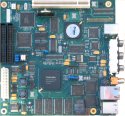 Toshiba mini-ITX-based PVR ref design — [Oct. 18, 2004] — Toshiba America Electronic Components (TAEC) has released a hardware/software reference design targeting digital multimedia appliances with sub-$100 BOMs (bills-of-material). The reference design, designated AVM49R, includes a mini-ITX board with a dedicated MPEG-1/2/4 codec chip alongside a 333MHz MIPS RISC-based SoC. Details here and here
Toshiba mini-ITX-based PVR ref design — [Oct. 18, 2004] — Toshiba America Electronic Components (TAEC) has released a hardware/software reference design targeting digital multimedia appliances with sub-$100 BOMs (bills-of-material). The reference design, designated AVM49R, includes a mini-ITX board with a dedicated MPEG-1/2/4 codec chip alongside a 333MHz MIPS RISC-based SoC. Details here and here
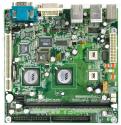 VIA dual-processor (DP) mini-ITX board — Oct. 6, 2004 — Via expects to ship its long-awaited “SP” mini-ITX board in November, followed in early 2005 by a “DP” model with dual nanoBGA embedded processors — quite likely the world's first dual processor mini-ITX mobo. Both mini-ITX boards will feature a new northbridge supporting faster FSB (front-side bus), southbridge interconnect, and DDR memory speeds, and hardware MPEG-4 acceleration. details
VIA dual-processor (DP) mini-ITX board — Oct. 6, 2004 — Via expects to ship its long-awaited “SP” mini-ITX board in November, followed in early 2005 by a “DP” model with dual nanoBGA embedded processors — quite likely the world's first dual processor mini-ITX mobo. Both mini-ITX boards will feature a new northbridge supporting faster FSB (front-side bus), southbridge interconnect, and DDR memory speeds, and hardware MPEG-4 acceleration. details
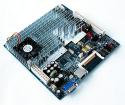 New VIA mini-ITX board targets vertically challenged apps — June 24, 2004 — VIA is shipping an ultra-low profile mini-ITX mainboard suitable for Linux-based flat TVs, LCD-panel computers, and other vertically challenged devices. The Epia MS uses a minimalistic I/O backplate and SODIMM memory for a slimmer form-factor, and is VIA's first mini-ITX board available with a fanless 1GHz Eden embedded processor. details
New VIA mini-ITX board targets vertically challenged apps — June 24, 2004 — VIA is shipping an ultra-low profile mini-ITX mainboard suitable for Linux-based flat TVs, LCD-panel computers, and other vertically challenged devices. The Epia MS uses a minimalistic I/O backplate and SODIMM memory for a slimmer form-factor, and is VIA's first mini-ITX board available with a fanless 1GHz Eden embedded processor. details
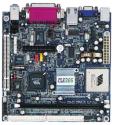 Next-gen VIA mobo touts speed, security, MPEG-4 — May 27, 2004 — VIA will preview its next-generation mini-ITX board for the consumer electronics market at next week's Computex 2004 in Taipei. The EPIA SP features a new graphics and memory controller hub (GMCH) supporting faster front-side bus (FSB), memory, and southbridge interconnect speeds. It also features a C3 processor clocked at 1.3GHz, integrated PadLock Hardware Security Suite, and MPEG-4 acceleration. details
Next-gen VIA mobo touts speed, security, MPEG-4 — May 27, 2004 — VIA will preview its next-generation mini-ITX board for the consumer electronics market at next week's Computex 2004 in Taipei. The EPIA SP features a new graphics and memory controller hub (GMCH) supporting faster front-side bus (FSB), memory, and southbridge interconnect speeds. It also features a C3 processor clocked at 1.3GHz, integrated PadLock Hardware Security Suite, and MPEG-4 acceleration. details
 Mini-ITX board boasts die-shrunk Pentium M — May 25, 2004 — Single-board computer vendor Lippert announced mini-ITX form-factor board support for Intel's new Dothan processor, a 90nm die-shrink of the Pentium M released today by Intel. The Dothan chip includes 170 million transistors, compared with 77 million on the previous Pentium M, making lots more room for on-chip memory caches, according to Lippert. details
Mini-ITX board boasts die-shrunk Pentium M — May 25, 2004 — Single-board computer vendor Lippert announced mini-ITX form-factor board support for Intel's new Dothan processor, a 90nm die-shrink of the Pentium M released today by Intel. The Dothan chip includes 170 million transistors, compared with 77 million on the previous Pentium M, making lots more room for on-chip memory caches, according to Lippert. details
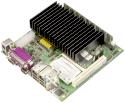 Centrino-like mini-ITX board available passively cooled — Jan. 17, 2004 — German single-board computer vendor Lippert is shipping a passively cooled version of its Centrino-like Thunderbird mini-ITX board based on an Intel Pentium M running at 1.3GHz. An actively cooled version running at 1.6GHz has been available since mid-December, 2003. Additionally, Lippert is readying a number of mini-PCI expansion devices and PCI riser cards for the boards. details
Centrino-like mini-ITX board available passively cooled — Jan. 17, 2004 — German single-board computer vendor Lippert is shipping a passively cooled version of its Centrino-like Thunderbird mini-ITX board based on an Intel Pentium M running at 1.3GHz. An actively cooled version running at 1.6GHz has been available since mid-December, 2003. Additionally, Lippert is readying a number of mini-PCI expansion devices and PCI riser cards for the boards. details
 Transmeta spins Crusoe-based mini-ITX mobo — Jan. 07, 2004 — Transmeta introduces two reference platforms to support device and system designs based on its Efficeon TM8600 and Crusoe TM5900 processors. Both platforms support Linux. Interestingly, the Crusoe TM5900 reference platform (pictured on the left) is implemented in the increasingly popular mini-ITX motherboard form-factor. details
Transmeta spins Crusoe-based mini-ITX mobo — Jan. 07, 2004 — Transmeta introduces two reference platforms to support device and system designs based on its Efficeon TM8600 and Crusoe TM5900 processors. Both platforms support Linux. Interestingly, the Crusoe TM5900 reference platform (pictured on the left) is implemented in the increasingly popular mini-ITX motherboard form-factor. details
 Mini-ITX P4M motherboard soars to 1700MHz and beyond — Dec. 17, 2003 — Taiwanese industrial computer board supplier Commell pushes the speed envelope for the compact mini-ITX mini motherboard form-factor, with the release of a mini-ITX board that supports Intel's mobile Pentium 4 processors at clock rates in excess of 1.7GHz. details
Mini-ITX P4M motherboard soars to 1700MHz and beyond — Dec. 17, 2003 — Taiwanese industrial computer board supplier Commell pushes the speed envelope for the compact mini-ITX mini motherboard form-factor, with the release of a mini-ITX board that supports Intel's mobile Pentium 4 processors at clock rates in excess of 1.7GHz. details
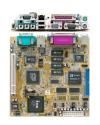 Computing Client Development Center of Beijing launches low-end mini-ITX board for thin clients — Dec. 11, 2003 — The GSTB-3602 mini-ITX board and reference design kit is the very first product from Computing Client Development Center of Beijing, a joint venture between Advanced Micro Devices (AMD) and BLX IC Design Corp. Ltd. details
Computing Client Development Center of Beijing launches low-end mini-ITX board for thin clients — Dec. 11, 2003 — The GSTB-3602 mini-ITX board and reference design kit is the very first product from Computing Client Development Center of Beijing, a joint venture between Advanced Micro Devices (AMD) and BLX IC Design Corp. Ltd. details
 First Pentium M based mini-ITX SBC runs Linux Sep. 03, 2003 — Lippert GmbH introduces what is claimed to be the first mini-ITX form-factor motherboard to be based on an Intel Pentium M processor. The compact (6.7 x 6.7 in.) Thunderbird SBC features a Centrino-like architecture, with Intel northbridge and southbridge and a mini-PCI slot, and runs Linux, the company says. details
First Pentium M based mini-ITX SBC runs Linux Sep. 03, 2003 — Lippert GmbH introduces what is claimed to be the first mini-ITX form-factor motherboard to be based on an Intel Pentium M processor. The compact (6.7 x 6.7 in.) Thunderbird SBC features a Centrino-like architecture, with Intel northbridge and southbridge and a mini-PCI slot, and runs Linux, the company says. details
 2W ARM9-based mini-ITX board comes with Debian Linux — Oct. 29, 2003 — Simtec Electronics launches a mini-ITX based evaluation board that, in the highest specification of several available configurations, draws just 2 watts. The Simtec Samsung 2410 evaluation board is based on a Samsung S3C2410 ARM9 processor and is supplied with a Linux kernel, Debian cross-development environment, and several sample applications.details
2W ARM9-based mini-ITX board comes with Debian Linux — Oct. 29, 2003 — Simtec Electronics launches a mini-ITX based evaluation board that, in the highest specification of several available configurations, draws just 2 watts. The Simtec Samsung 2410 evaluation board is based on a Samsung S3C2410 ARM9 processor and is supplied with a Linux kernel, Debian cross-development environment, and several sample applications.details
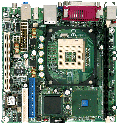 First mobile Pentium 4 mini-ITX SBC? — Jun. 16, 2003 — Commell announces what is claimed to be the first mini-ITX form-factor single-board computer (SBC) to be based on an Intel mobile Pentium 4 processor. Commell said its LV-670M SBC supports Linux and other embedded and desktop operating systems and targets VoD (video on demand), DVR (Digital Video Recorder), digital video broadcasting (DVB), streaming, surveillance, compression (MPEG), interactive servers, POS, Kiosk, ATM, Panel PC, transaction workstation, and terminal applications. details
First mobile Pentium 4 mini-ITX SBC? — Jun. 16, 2003 — Commell announces what is claimed to be the first mini-ITX form-factor single-board computer (SBC) to be based on an Intel mobile Pentium 4 processor. Commell said its LV-670M SBC supports Linux and other embedded and desktop operating systems and targets VoD (video on demand), DVR (Digital Video Recorder), digital video broadcasting (DVB), streaming, surveillance, compression (MPEG), interactive servers, POS, Kiosk, ATM, Panel PC, transaction workstation, and terminal applications. details
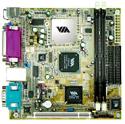 The joy of mini-ITX . . . — Jun. 12, 2003 — The Globe and Mail's “Chic Geek” Ian Johnson has discovered the mini-ITX motherboard form-factor, and he likes what he sees. In his article titled “Mini-ITX: Incredibly Tiny, eXceptionally cool,” Johnson notes that “Mini-ITX motherboards are just starting to go mainstream, and they're real beauties if you want to save money and space. They're about the size of a CD jewel case and sell for between $75 and $200 (U.S.), depending on the speed of their built-in processor. All you have to do is add a case, memory and a hard disk, load an operating system and plug in a monitor, and you're off . . . ” details
The joy of mini-ITX . . . — Jun. 12, 2003 — The Globe and Mail's “Chic Geek” Ian Johnson has discovered the mini-ITX motherboard form-factor, and he likes what he sees. In his article titled “Mini-ITX: Incredibly Tiny, eXceptionally cool,” Johnson notes that “Mini-ITX motherboards are just starting to go mainstream, and they're real beauties if you want to save money and space. They're about the size of a CD jewel case and sell for between $75 and $200 (U.S.), depending on the speed of their built-in processor. All you have to do is add a case, memory and a hard disk, load an operating system and plug in a monitor, and you're off . . . ” details
 VPN router project nears initial release — Dec. 29, 2003 — A new open source project aims to build a VPN router that supports all major routing protocols on a standardized mini-ITX hardware platform running embedded Linux. The “Linux Router Project – LR101” started in mid-2003 and plans a first release in January 2004.details
VPN router project nears initial release — Dec. 29, 2003 — A new open source project aims to build a VPN router that supports all major routing protocols on a standardized mini-ITX hardware platform running embedded Linux. The “Linux Router Project – LR101” started in mid-2003 and plans a first release in January 2004.details
 Meet OAP — an open robot reference design project — Nov. 5, 2003 — “Have you ever dreamed of building your own Linux-based droid [that could] roam around your home autonomously, intelligently obeying your commands?” asks Dafydd Walters. “You may now be able to finally fulfill your dream.” Walters founded and leads the Open Automaton Project (OAP), which aims to help enthusiasts assemble an intelligent mobile robot with stereo vision and state-of-the-art mini-ITX PC mainboard technology — for about the cost of a good PC. details
Meet OAP — an open robot reference design project — Nov. 5, 2003 — “Have you ever dreamed of building your own Linux-based droid [that could] roam around your home autonomously, intelligently obeying your commands?” asks Dafydd Walters. “You may now be able to finally fulfill your dream.” Walters founded and leads the Open Automaton Project (OAP), which aims to help enthusiasts assemble an intelligent mobile robot with stereo vision and state-of-the-art mini-ITX PC mainboard technology — for about the cost of a good PC. details
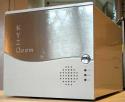 GtkPizza goes embedded — Feb. 21, 2003 — Just when you thought pizza wasn't an embedded system, along comes this announcement from the GtkPizza project . . . GtkPizza is a GPL'ed point-of-sale (POS) application that presents an interface for Pizza Bars to take orders over the phone for pizza deliveries. Initially developed in Australia for local Pizza Bars, GtkPizza has since spread around the world, and is sold and supported in a number of countries. GtkPizza has now made a step forward into the embedded space. Minor modifications to the code have enabled GtkPizza to run as a full screen application running on diskless mini-ITX boards using the VIA EPIA / VIA C3 processor. details
GtkPizza goes embedded — Feb. 21, 2003 — Just when you thought pizza wasn't an embedded system, along comes this announcement from the GtkPizza project . . . GtkPizza is a GPL'ed point-of-sale (POS) application that presents an interface for Pizza Bars to take orders over the phone for pizza deliveries. Initially developed in Australia for local Pizza Bars, GtkPizza has since spread around the world, and is sold and supported in a number of countries. GtkPizza has now made a step forward into the embedded space. Minor modifications to the code have enabled GtkPizza to run as a full screen application running on diskless mini-ITX boards using the VIA EPIA / VIA C3 processor. details
 Building a mini-ITX Linux recording studio — Jun. 2, 2004 — This simple embedded Linux project builds a dedicated music recording and editing computer using a CompactFlash card instead of a hard drive, to eliminate hard disk chatter. It uses the latest release from the Agnula (GNU/Linux Audio) project, and the newest VIA Epia MII-12000 mini-ITX board. details
Building a mini-ITX Linux recording studio — Jun. 2, 2004 — This simple embedded Linux project builds a dedicated music recording and editing computer using a CompactFlash card instead of a hard drive, to eliminate hard disk chatter. It uses the latest release from the Agnula (GNU/Linux Audio) project, and the newest VIA Epia MII-12000 mini-ITX board. details
 Wiring a vintage teletype to the Internet using Linux — Aug. 20, 2003 — Do you have an old teletype with a 5-bit serial interface sitting around that you've been itching to hook up to the Internet? If so, this article by Henry Minsky is just what you've been looking for. Minsky has caught the mini-ITX motherboard form-factor bug big-time, arguing that the compact yet full-featured boards can now compete favorably with more traditional embedded platforms such as single-board computers (SBCs) and system-on-chips (SOCs), in terms of connectivity options, performance, power usage, development time, and flexibility — and, especially, price. details.
Wiring a vintage teletype to the Internet using Linux — Aug. 20, 2003 — Do you have an old teletype with a 5-bit serial interface sitting around that you've been itching to hook up to the Internet? If so, this article by Henry Minsky is just what you've been looking for. Minsky has caught the mini-ITX motherboard form-factor bug big-time, arguing that the compact yet full-featured boards can now compete favorably with more traditional embedded platforms such as single-board computers (SBCs) and system-on-chips (SOCs), in terms of connectivity options, performance, power usage, development time, and flexibility — and, especially, price. details.
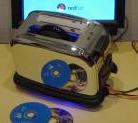 Toasting mp3's with Linux — Apr. 14, 2003 — As an exercise in embedded system design, Michael Palmer set out to develop the “mp3 Toaster.” Palmer's embedded Linux mp3 toaster combines an embedded mini-ITX system with Open Source software (Linux, LAME, Netjuke, Lirc) to create a computing appliance that operates without the need for a keyboard, mouse, or monitor. details.
Toasting mp3's with Linux — Apr. 14, 2003 — As an exercise in embedded system design, Michael Palmer set out to develop the “mp3 Toaster.” Palmer's embedded Linux mp3 toaster combines an embedded mini-ITX system with Open Source software (Linux, LAME, Netjuke, Lirc) to create a computing appliance that operates without the need for a keyboard, mouse, or monitor. details.
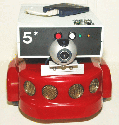 Watch out, the Centibots are invading LinuxWorld — Jul. 30, 2003 Via Technologies demonstrates Linux-based robots developed by SRI International at next week's LinuxWorld conference in San Francisco. The “Centibots” are equipped with equipped with Via EPIA 5000 Mini-ITX form-factor single-board computers, and conduct a search and rescue mission for a hidden penguin doll. details
Watch out, the Centibots are invading LinuxWorld — Jul. 30, 2003 Via Technologies demonstrates Linux-based robots developed by SRI International at next week's LinuxWorld conference in San Francisco. The “Centibots” are equipped with equipped with Via EPIA 5000 Mini-ITX form-factor single-board computers, and conduct a search and rescue mission for a hidden penguin doll. details
 Army Linux — Aug. 30, 2003 — Army Linux documents the development of an embedded linux project constructed from a 50-caliber ammunition canister. The project uses VIA Technologies mini-ITX EPIA motherboard and features an attractive backlit LCD screen. details
Army Linux — Aug. 30, 2003 — Army Linux documents the development of an embedded linux project constructed from a 50-caliber ammunition canister. The project uses VIA Technologies mini-ITX EPIA motherboard and features an attractive backlit LCD screen. details
 Embedding Linux in a surface-to-surface PC — Feb. 28, 2003 — “When I first thought of this case mod, there were only two responses: cool! Or, why? This started as an actual U.S. Air Force surplus Mk 81 Low Drag General Purpose (LDGP) bomb. The motherboard is a VIA epia mini-ITX form-factor board with a C3 800 MHz processor.” details
Embedding Linux in a surface-to-surface PC — Feb. 28, 2003 — “When I first thought of this case mod, there were only two responses: cool! Or, why? This started as an actual U.S. Air Force surplus Mk 81 Low Drag General Purpose (LDGP) bomb. The motherboard is a VIA epia mini-ITX form-factor board with a C3 800 MHz processor.” details
 An introduction to the MeshBox — a Linux-powered wireless mesh repeater — Dec. 16, 2002 — LocustWorld announces a hardware/software implementation of an open access point platform based on mini-ITX and capable of meeting the needs of community networks. The system is available for purchase as a ready-to-go system (the “MeshBox”), or the software can be freely downloaded from LocustWorld's website. details
An introduction to the MeshBox — a Linux-powered wireless mesh repeater — Dec. 16, 2002 — LocustWorld announces a hardware/software implementation of an open access point platform based on mini-ITX and capable of meeting the needs of community networks. The system is available for purchase as a ready-to-go system (the “MeshBox”), or the software can be freely downloaded from LocustWorld's website. details
 Toshiba AVM49R Multimedia Reference Platform — [Sep. 16, 2005] — A reference design for Linux-based DVD players, IP-STBs, and digital media players. Uses either of two mini-ITX boards incorporating a general-purpose RISC-based application processor from Toshiba and a digital media coprocessor from Sigma Designs. detail.
Toshiba AVM49R Multimedia Reference Platform — [Sep. 16, 2005] — A reference design for Linux-based DVD players, IP-STBs, and digital media players. Uses either of two mini-ITX boards incorporating a general-purpose RISC-based application processor from Toshiba and a digital media coprocessor from Sigma Designs. detail.
 Sun JBox — [Jun. 28, 2005] — Sun Microsystems, Via Technologies, and iGoLogic teamed up on the JBox, an x86-based development kit for embedded applications based on Sun's Java 2, Standard Edition (J2SE). The compact, fully packaged system is supplied with a choice of Linux or Sun's Solaris operating system. Details
Sun JBox — [Jun. 28, 2005] — Sun Microsystems, Via Technologies, and iGoLogic teamed up on the JBox, an x86-based development kit for embedded applications based on Sun's Java 2, Standard Edition (J2SE). The compact, fully packaged system is supplied with a choice of Linux or Sun's Solaris operating system. Details
 Capricorn PetaBox — [Jun. 22, 2005] — Capricorn's PetaBox storage servers are based on as many as 600 Via mini-ITX boards running Debian or Fedora Linux, configured as JBOD (just a bunch of disks) arrays. They cost less that $2/GB, and are used by the Internet Archive for the Wayback Machine project. Details
Capricorn PetaBox — [Jun. 22, 2005] — Capricorn's PetaBox storage servers are based on as many as 600 Via mini-ITX boards running Debian or Fedora Linux, configured as JBOD (just a bunch of disks) arrays. They cost less that $2/GB, and are used by the Internet Archive for the Wayback Machine project. Details
 Digital Designs Blackbird — [Jun. 10, 2005] — A line of digital home music servers based on off-the-shelf mini-ITX parts, and high-end PCI sound cards, the Blackbird servers have 80-300GB hard drives, lots of networking options, and a web interface supporting control from a wireless PDA. Details
Digital Designs Blackbird — [Jun. 10, 2005] — A line of digital home music servers based on off-the-shelf mini-ITX parts, and high-end PCI sound cards, the Blackbird servers have 80-300GB hard drives, lots of networking options, and a web interface supporting control from a wireless PDA. Details
 Real Digital Media XF Digital Sign — [Apr. 15, 2005] — Real Digital Media (RDM) has used Linux and a Via-based embedded computer board to build a networked digital signage product with Flash and central management capabilities. The company expects the digital signage market to standardize on Linux, because its stability gives it “obvious advantages.” Details
Real Digital Media XF Digital Sign — [Apr. 15, 2005] — Real Digital Media (RDM) has used Linux and a Via-based embedded computer board to build a networked digital signage product with Flash and central management capabilities. The company expects the digital signage market to standardize on Linux, because its stability gives it “obvious advantages.” Details
 Quorum group whiteboard collaboration tool — Sep. 05, 2003 — Quorum Tools Ltd. ships an elegant electronic group whiteboard powered by a high-spec'ed mini-ITX system with five graphics tablets attached via USB. The Quorum attaches to a projector to enable group drawing and visual collaboration. details
Quorum group whiteboard collaboration tool — Sep. 05, 2003 — Quorum Tools Ltd. ships an elegant electronic group whiteboard powered by a high-spec'ed mini-ITX system with five graphics tablets attached via USB. The Quorum attaches to a projector to enable group drawing and visual collaboration. details
 Interact-TV unveils developer version of home entertainment center — Aug. 06, 2003 — Interact-TV unveils a developer version of the Linux-based Telly MC1000 Digital Entertainment Center, based on a Via Epia M-series mini-ITX board. According to Interact-TV, the Telly MC1000d developer version is a complete system with full capabilities for playing, recording, and archiving TV shows; ripping and burning CDs; playing DVDs, music, and digital photos; and sharing media over a home network. But in addition, the special developer version comes with tools that enable developers to create new features, enhancements, and in other ways customize the Telly. details
Interact-TV unveils developer version of home entertainment center — Aug. 06, 2003 — Interact-TV unveils a developer version of the Linux-based Telly MC1000 Digital Entertainment Center, based on a Via Epia M-series mini-ITX board. According to Interact-TV, the Telly MC1000d developer version is a complete system with full capabilities for playing, recording, and archiving TV shows; ripping and burning CDs; playing DVDs, music, and digital photos; and sharing media over a home network. But in addition, the special developer version comes with tools that enable developers to create new features, enhancements, and in other ways customize the Telly. details
 Device profile: IR Data “Wireless Zone” — Feb. 7, 2003 — IR Data (Irvine, CA) recently unveils a Linux-based portable wireless server based on a VIA mini-ITX board with a Cyrix C3-800. Dubbed the Wireless Zone, IR Data's new gadget takes advantage of Linux, Apache, and other open source technologies to creates its own 802.11b wireless (WiFi) hot zone, within which it can deliver web pages, demonstrations, presentations, and other data to wireless-enabled devices and systems without requiring Internet access. details.
Device profile: IR Data “Wireless Zone” — Feb. 7, 2003 — IR Data (Irvine, CA) recently unveils a Linux-based portable wireless server based on a VIA mini-ITX board with a Cyrix C3-800. Dubbed the Wireless Zone, IR Data's new gadget takes advantage of Linux, Apache, and other open source technologies to creates its own 802.11b wireless (WiFi) hot zone, within which it can deliver web pages, demonstrations, presentations, and other data to wireless-enabled devices and systems without requiring Internet access. details.
 Toshiba America Electronic Components AVM49R (PVR ref design) — [Oct. 21, 2004] — A hardware/software reference design targeting digital multimedia appliances with sub-$100 BOMs (bills-of-material). The reference design, designated AVM49R, includes a mini-ITX board with a dedicated MPEG-1/2/4 codec chip alongside a 333MHz MIPS RISC-based SoC (system-on-chip). The design runs Linux. details
Toshiba America Electronic Components AVM49R (PVR ref design) — [Oct. 21, 2004] — A hardware/software reference design targeting digital multimedia appliances with sub-$100 BOMs (bills-of-material). The reference design, designated AVM49R, includes a mini-ITX board with a dedicated MPEG-1/2/4 codec chip alongside a 333MHz MIPS RISC-based SoC (system-on-chip). The design runs Linux. details
 Via frees Unichrome driver source — [Apr. 11, 2005] — Via has released source code to Linux 2.6 and Xorg/XFree86 drivers for the Unichrome graphics capabilities on northbridge chips in its popular mini-ITX boards. The drivers offer 2D, 3D, and hardware MPEG2/4 acceleration, as well as video overlay, and support both the CLE266 and CN400 northbridges. details
Via frees Unichrome driver source — [Apr. 11, 2005] — Via has released source code to Linux 2.6 and Xorg/XFree86 drivers for the Unichrome graphics capabilities on northbridge chips in its popular mini-ITX boards. The drivers offer 2D, 3D, and hardware MPEG2/4 acceleration, as well as video overlay, and support both the CLE266 and CN400 northbridges. details
 Real-time technology demoed on VIA mini-ITX board — Jan. 09, 2004 — Japanese embedded Linux house Lineo Solutions demonstrates hard, real-time Linux running on an inexpensive, widely available mini-ITX board, the VIA Epia-ME6000. The Lineo Solutions implementation features boot- and shutdown-times under two seconds, and generally aims to satisfy requirements set forth by the the Consumer Electronics Linux Forum (CELF). details
Real-time technology demoed on VIA mini-ITX board — Jan. 09, 2004 — Japanese embedded Linux house Lineo Solutions demonstrates hard, real-time Linux running on an inexpensive, widely available mini-ITX board, the VIA Epia-ME6000. The Lineo Solutions implementation features boot- and shutdown-times under two seconds, and generally aims to satisfy requirements set forth by the the Consumer Electronics Linux Forum (CELF). details
 New embedded Linux BSP for inexpensive VIA mini-ITX board — Dec. 09, 2003 — Lineo Solutions (Japan) releases a uLinux Consumer Electronics Edition (CE Edition) Board Support Package (BSP) for the VIA EPIA-ME6000, an inexpensive and widely available mini-ITX motherboard. Lineo says it chose the VIA and the x86 architecture as a universal platform that would enable everyone to evaluate its Linux technology. The BSP is provided as a snap-in for Lineo's “uLinux Elite” embedded cross development environment. details
New embedded Linux BSP for inexpensive VIA mini-ITX board — Dec. 09, 2003 — Lineo Solutions (Japan) releases a uLinux Consumer Electronics Edition (CE Edition) Board Support Package (BSP) for the VIA EPIA-ME6000, an inexpensive and widely available mini-ITX motherboard. Lineo says it chose the VIA and the x86 architecture as a universal platform that would enable everyone to evaluate its Linux technology. The BSP is provided as a snap-in for Lineo's “uLinux Elite” embedded cross development environment. details
 VIA reveals next chapter of incredible shrinking motherboard saga — Sep. 29, 2003 — VIA CEO Wenchi Chen unveiled a prototype of the next evolution of his company's continually shrinking motherboard form-factor at the VIA Technology Forum last week in Taipei, Taiwan. VIA's Nano-ITX form-factor measures just 4.7 x 4.7 in. and represents the “smallest standard platform with full PC functionality,” Chen said. details
VIA reveals next chapter of incredible shrinking motherboard saga — Sep. 29, 2003 — VIA CEO Wenchi Chen unveiled a prototype of the next evolution of his company's continually shrinking motherboard form-factor at the VIA Technology Forum last week in Taipei, Taiwan. VIA's Nano-ITX form-factor measures just 4.7 x 4.7 in. and represents the “smallest standard platform with full PC functionality,” Chen said. details
 VIA highlights Linux-based devices at LinuxWorld — Aug. 04, 2003 — VIA Technologies will highlight an assortment of interesting Linux-powered devices and applications based on its mini-ITX form-factor motherboards at LinuxWorld in San Francisco this week. Demonstrations from Interact-TV, Open Source Telecom Corp., SRI International, Mini-Box.com, and Tonic Domains Corp. will showcase a variety of Linux-based home entertainment, server, Voice Over IP, and robotics products; also, MythTV, a well-known Open Source personal video recorder project, will also be demonstrated as part of VIA's “Totally Connected Home” demos. details
VIA highlights Linux-based devices at LinuxWorld — Aug. 04, 2003 — VIA Technologies will highlight an assortment of interesting Linux-powered devices and applications based on its mini-ITX form-factor motherboards at LinuxWorld in San Francisco this week. Demonstrations from Interact-TV, Open Source Telecom Corp., SRI International, Mini-Box.com, and Tonic Domains Corp. will showcase a variety of Linux-based home entertainment, server, Voice Over IP, and robotics products; also, MythTV, a well-known Open Source personal video recorder project, will also be demonstrated as part of VIA's “Totally Connected Home” demos. details
Story navigation . . .
- Part 1: About this guide
- Part 2: A Linux-oriented Intro to Embeddable Single Board Computers
- Part 3: PC/104 and PC/104-Plus SBCs
- Part 4: EBX SBCs
- Part 5: Filling the gap between PC/104 and EBX
- Part 6: Tiny SBCs for Embedded Linux based projects
- Part 7: Mini-ITX madness
This article was originally published on LinuxDevices.com and has been donated to the open source community by QuinStreet Inc. Please visit LinuxToday.com for up-to-date news and articles about Linux and open source.